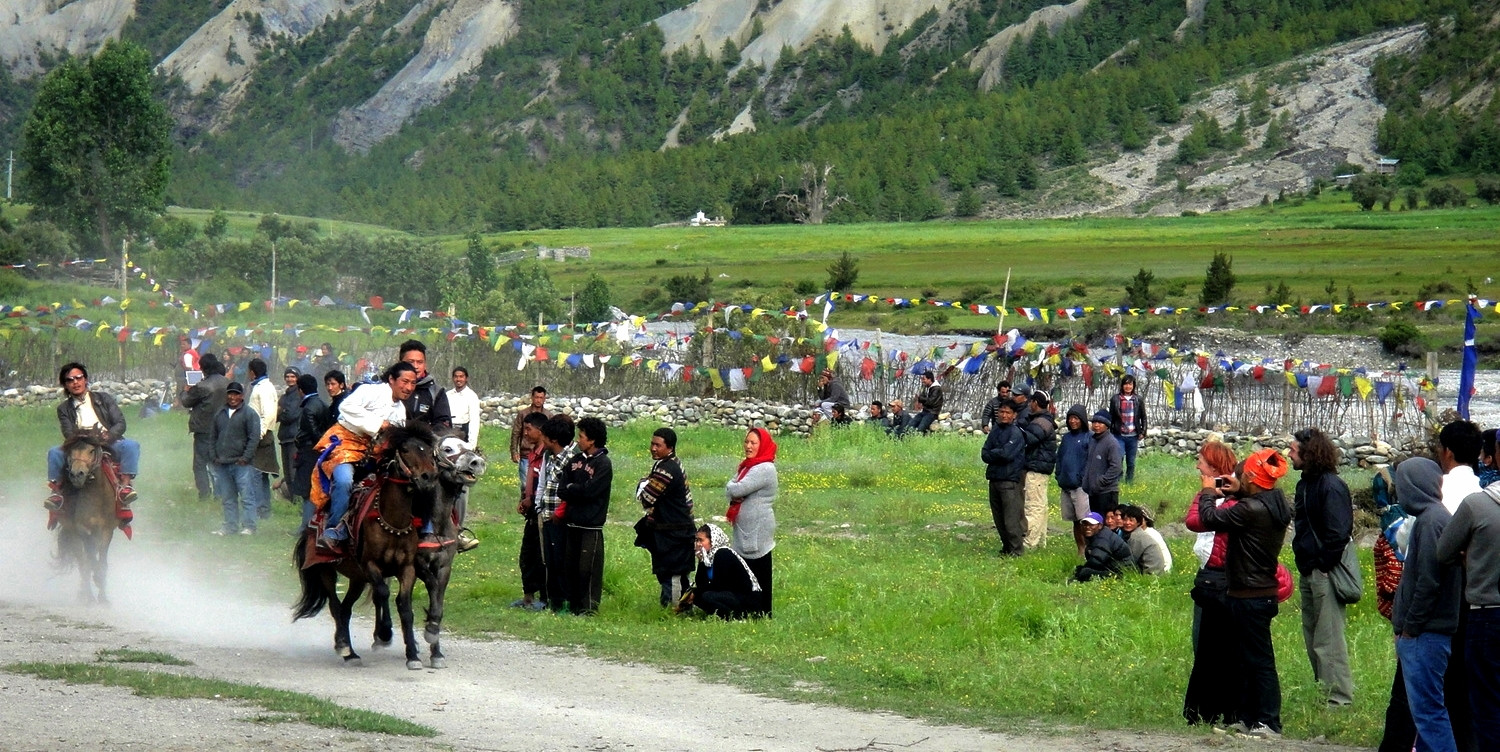Mani Rimdu Festival
The Mani Rimdu Festival is one of the most renowned and spiritually significant festivals celebrated in the Everest region of Nepal, particularly at Tengboche Monastery. This festival is a vibrant testament to the rich cultural and religious heritage of the Sherpa people.
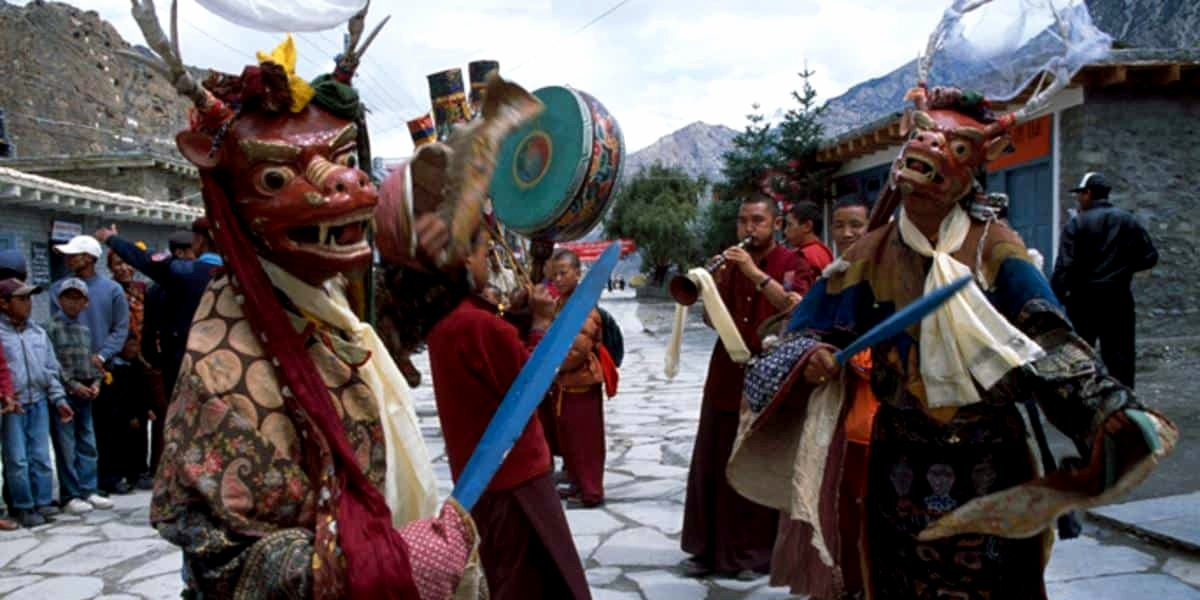
-
Origins and Significance: Mani Rimdu is celebrated on the tenth month of the Tibetan lunar calendar, typically falling in October or November. It commemorates the founding of Buddhism by Guru Rinpoche (Padmasambhava), who is revered for bringing Buddhism to Tibet. The festival lasts for 19 days, with the last three days being public celebrations that attract devotees from various Sherpa communities and tourists from around the world.
-
Rituals and Celebrations: The festival begins with an intricate preparation of sand mandalas and various sacred objects. These mandalas are made from colored sand and meticulously placed over several days. The creation process is led by the head lama of the monastery and is considered a profound art form as well as a spiritual practice. During Mani Rimdu, monks don colorful silk robes and masks to perform ritual dances known as 'Cham'. These dances depict various themes from Tibetan Buddhism, such as the triumph of good over evil. The dances are highly choreographed and are believed to confer blessings upon the spectators and drive away harmful spirits.
-
The Wong (The Blessing): The public celebration begins with 'The Wong', where blessings are bestowed upon the attendees. The head lama of the monastery uses a series of intricate hand gestures and chants during a performance that is considered a transmission of the blessings of Guru Rinpoche.
-
Chhingpa: Following The Wong, the next part of the celebration includes the Chhingpa, a series of dances featuring demons and protectors of the Buddhist faith. These dances are a form of moral instruction meant to convey Buddhist teachings through visual stories.
-
Fire Puja: The festival concludes with a Fire Puja, an offering to Agni (the god of fire) and to the Gods of the mandala. The purpose of this ritual is to dispel any harmful spirits that might be lingering. It involves burning offerings in a large bonfire, accompanied by more chanting and music.
Visiting during Mani Rimdu provides not just a chance to see the beauty of Nepal’s high-altitude landscapes but also to engage deeply with the spiritual and communal life of the Sherpa people. If you're planning to experience this captivating festival, organizing your trip with a knowledgeable tour operator like Relax Getaways can enhance your journey, ensuring a respectful and enriching cultural experience.
Yartung Festival in Mustang
The Yartung Festival in Mustang is one of the most exhilarating and culturally significant events celebrated in the upper reaches of the Himalayas in Nepal. This festival is particularly famous for its high-energy horse races, vibrant dances, and community feasts, marking an important time for social gatherings and cultural display.
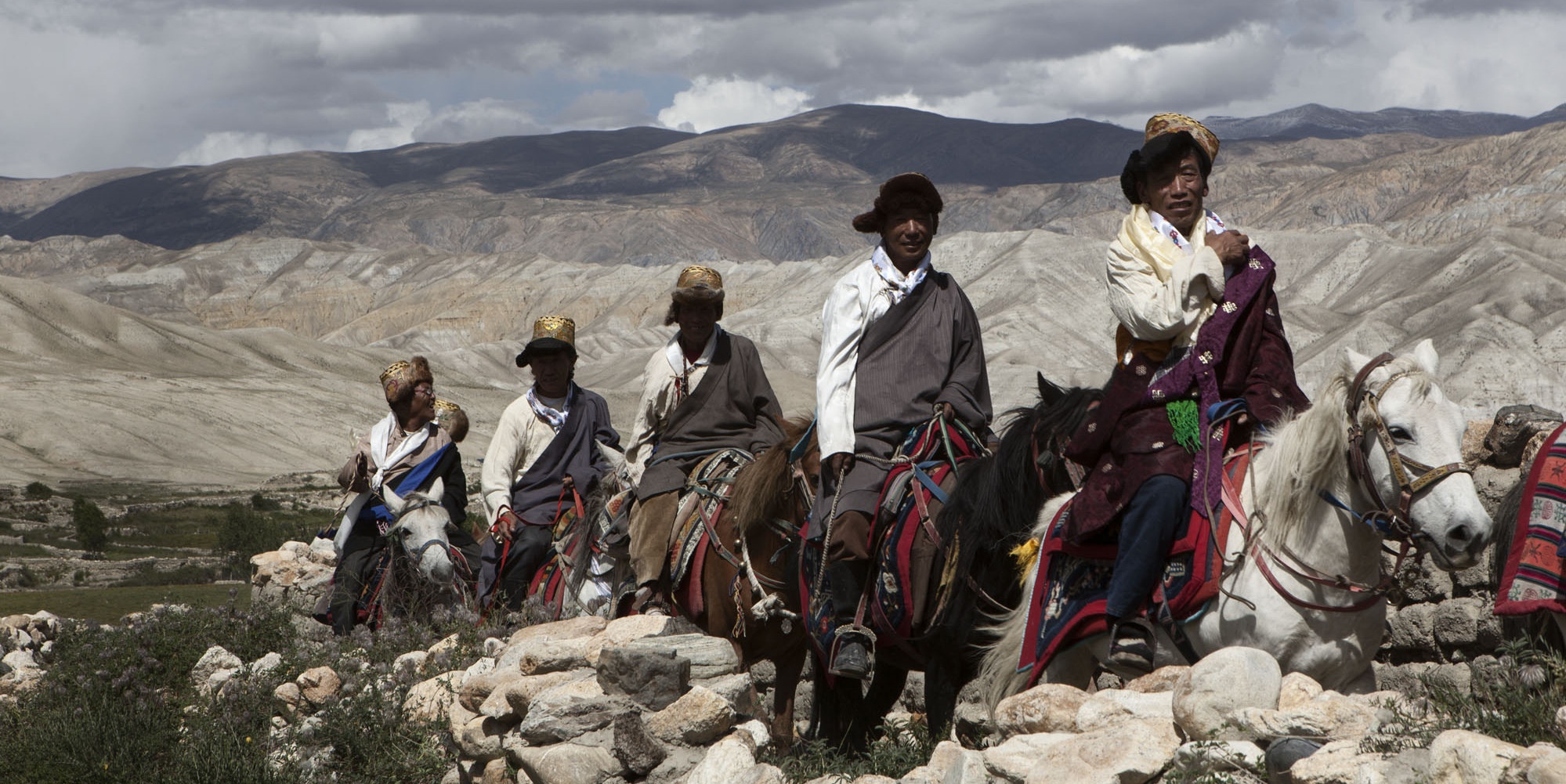
-
Origins and Significance: Yartung is primarily celebrated in the Mustang region, once an independent kingdom closely linked with Tibetan culture. The festival occurs at the end of the monsoon season, generally in August or September, and is connected with the Tibetan Buddhist tradition. It marks the end of summer and the beginning of the harvest season, a period of great importance in an agriculturally dependent society.
-
Celebrations and Rituals: The highlight of the Yartung Festival is the thrilling horse races by local men and sometimes women, who showcase their exceptional equestrian skills. These races are not only a test of speed and agility but also a display of a centuries-old tradition that reflects the significance of horses in Mustang's daily life and history. The races are often accompanied by traditional music and cheering crowds, creating a lively atmosphere that captivates both locals and visitors.
-
Traditional Music and Dance: Music and dance play a central role in the Yartung celebrations. Dancers in traditional attire perform to the sounds of drums and other indigenous instruments, enacting dances that tell stories of their history and mythology. The music is typically vibrant, with rhythmic beats that resonate through the mountain air.
-
Social Aspect: Yartung is also a time for socializing and reuniting with family and friends. People from various villages gather to participate in or watch the races, share meals, and exchange news. It's a time for young people to meet and for families to celebrate their community ties and cultural heritage.
Visitors planning to attend the Yartung Festival should consider coordinating with experienced tour operators like Relax Getaways. They can provide essential guidance on how to respectfully participate in and enjoy the festival while ensuring a sustainable and culturally sensitive travel experience.
Dumji Festival
The Dumji Festival is an important celebration held annually by the Sherpa communities in the Khumbu region near Mount Everest. This festival serves as a fascinating fusion of religious observance and communal gathering, offering a vibrant insight into Sherpa culture and spirituality.
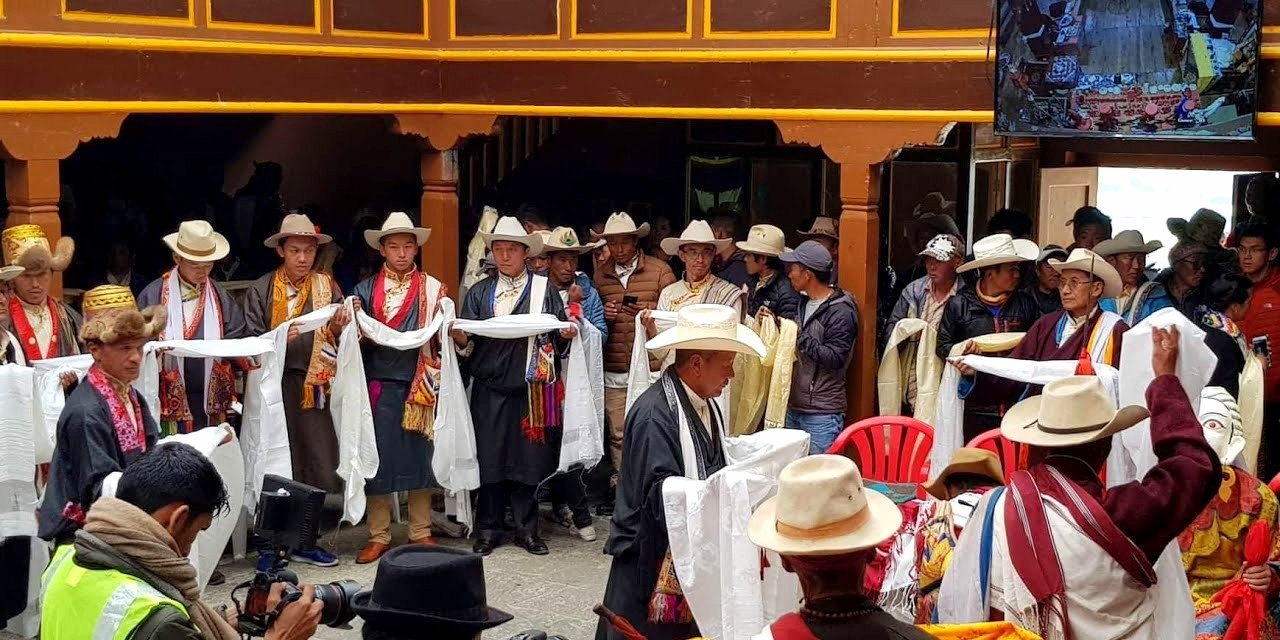
-
Origins and Significance: The Dumji Festival is celebrated to honor the anniversary of Guru Rinpoche's (Padmasambhava) birth on a lotus flower. Guru Rinpoche is credited with bringing Buddhism to Tibet and is a revered figure in Himalayan Buddhist cultures. The festival typically takes place in July, based on the Tibetan lunar calendar.
-
Celebrations and Rituals: Dumji involves a series of intricate rituals performed over four to six days, which are led by the local monastery's Lama. The festival commences with the construction of a symbolic representation of a chorten (stupa) made from dough, which plays a central role in the rituals. This is followed by days of religious ceremonies, chanting, and dancing.
-
The Role of the Lama: A key figure during Dumji is the Lama, who performs various sacred rituals to invoke spiritual blessings and protect the community from evil spirits. These rituals are believed to bring peace, prosperity, and good health to the village and its inhabitants.
-
Community Participation: One of the most appealing aspects of Dumji is its community focus. Families gather from various parts of the region to participate in the festivities. Homes are opened to guests, special meals are prepared, and there is a strong emphasis on sharing and community support. It's a time for reunions, making new friends, and strengthening community bonds.
-
Cultural Displays: Dancing and music are integral parts of Dumji, with performances that include both traditional Sherpa dances and chants. These dances are often dramatic and tell stories of mythical heroes and spiritual victories, serving both as entertainment and a form of transmitting cultural values and history.
Organizing a visit to witness the Dumji Festival with a knowledgeable tour operator like Relax Getaways can greatly enhance the experience. They ensure that visitors can enjoy the festival respectfully and responsibly, providing insights into the significance of the rituals and customs observed during the festivities.
Tibetan New Year Lhosar
The Tibetan New Year Lhosar is an auspicious and widely celebrated festival among the Tibetan and Sherpa communities in Nepal, as well as other Himalayan regions influenced by Tibetan culture. Lhosar marks the beginning of a new year and is a time of joyous festivities, rich traditions, and communal harmony.
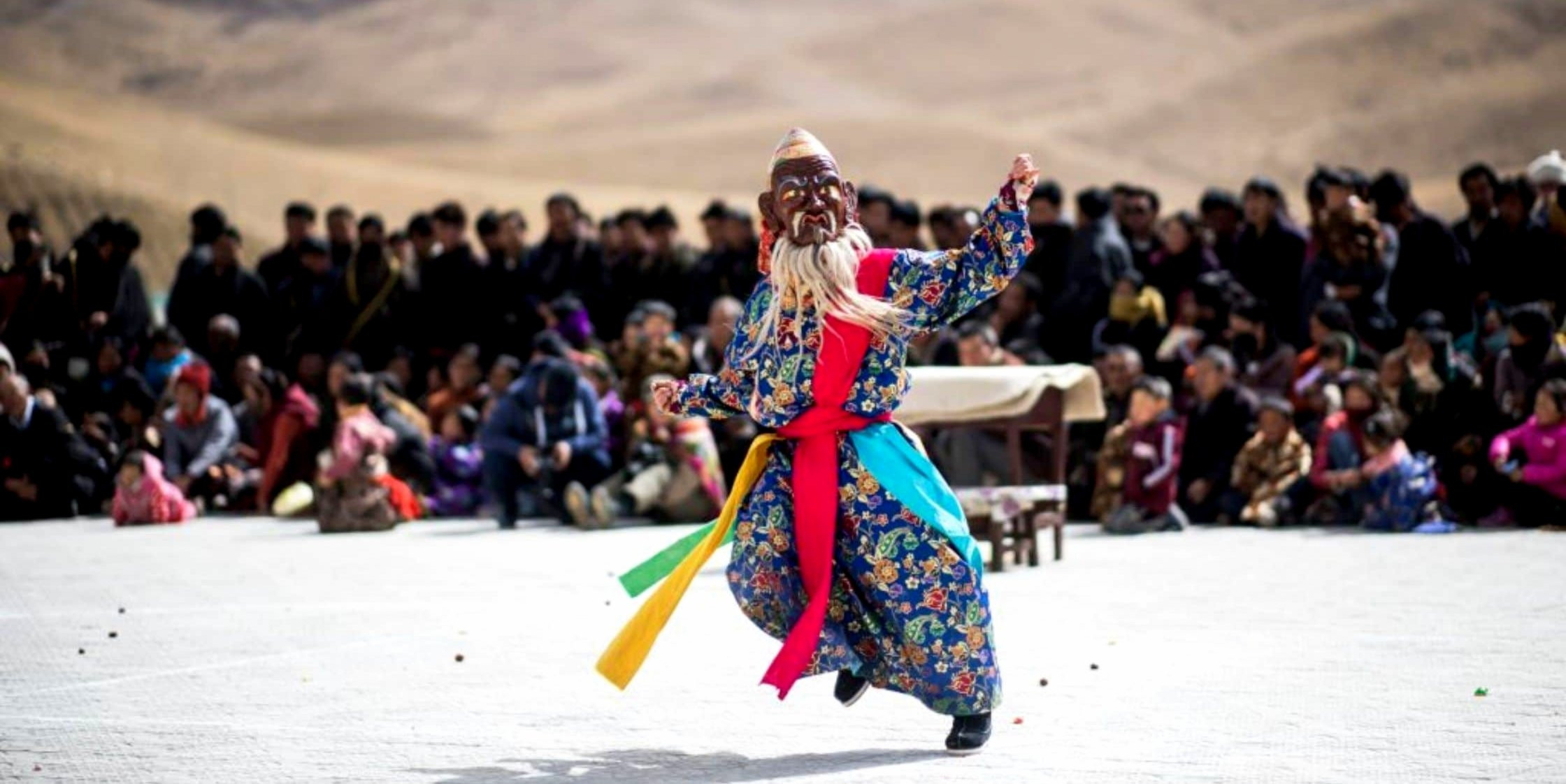
-
Origins and Significance: Lhosar is derived from the Tibetan words "lo," meaning year, and "sar," meaning new. The festival is celebrated on the first day of the lunisolar Tibetan calendar, which usually falls in February or March. This new year celebration is observed in three different styles depending on the ethnic group: Tamu (Gurung) Lhosar, Sonam (Sherpa) Lhosar, and Gyalpo (Bhutia) Lhosar, each bringing their own unique customs and traditions to the festivities.
-
Celebrations and Rituals: Lhosar begins with the cleaning and preparation of the home and surroundings, symbolizing the sweeping away of all misfortunes and bad luck from the past year and making room for future good luck and happiness. Houses are decorated, and special offerings called "Lama Losar" are prepared in honor of the Dalai Lama and other spiritual leaders.
-
Traditional Foods and Drinks: During Lhosar, families prepare and enjoy special dishes like "guthuk," a soup made with dumplings that are often filled with different ingredients to symbolize various fortunes or misfortunes. Barley and tsampa (roasted barley flour) are also important, used in rituals and consumed during the festivities. The celebration is also accompanied by copious amounts of Chang (barley beer) which is shared amongst all.
-
Cultural Performances and Music: Music and dance are integral to Lhosar celebrations. Traditional dances, often performed in colorful costumes and masks, tell stories of ancient times and convey moral lessons. The music, featuring instruments like the dungchen (long horn), damaru (small drum), and cymbals, fills the air with festive tones.
-
Community and Family Gatherings: Lhosar is a time for family reunions and community gatherings. People visit friends and family, exchange gifts, and give words of good wishes for the new year. The first few days are typically reserved for family, while the latter part of the celebration opens up for visiting with friends and extended community members.
For those interested in experiencing the vibrant and colorful festivities of Lhosar, planning a visit with an experienced tour operator like Relax Getaways can enrich the experience. They provide valuable insights into the cultural significance of the festivities and ensure that visitors can engage in the celebrations in a respectful and meaningful way.
Tiji Festival
The Tiji Festival is an annual event celebrated in the Mustang region of Nepal, a spectacular three-day ritual known as "The Chasing of the Demons." Tiji comes from the words "ten che," meaning the hope of Buddhism prevailing in all places.
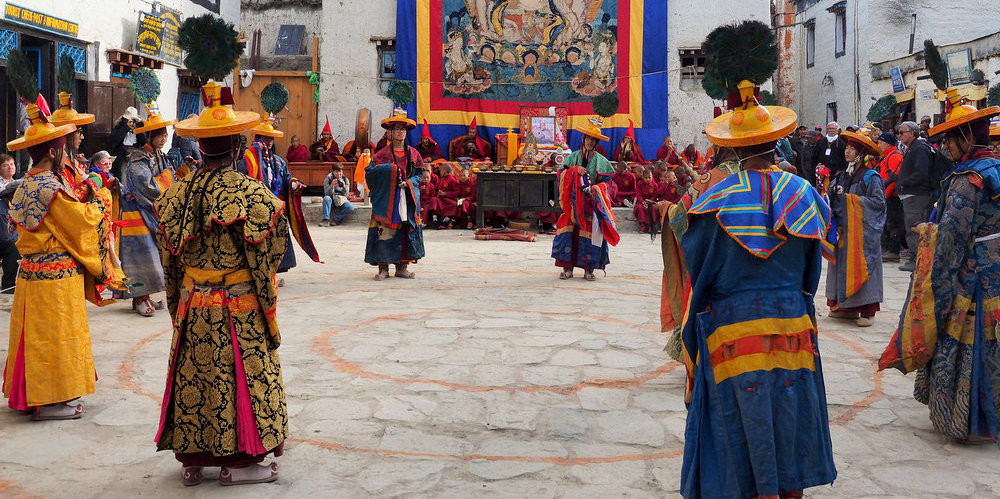
-
Origins and Significance: The festival is centered around a mythological story about a deity named Dorje Jono who battles against his demon father to save the Kingdom of Mustang from destruction. The demon father wreaks havoc on Mustang by causing water shortages, which are depicted through the dance performances during the festival. This vibrant event is part of an ancient Tibetan tradition of exorcism and is believed to bring peace and prosperity.
-
Celebrations and Rituals: The Tiji Festival takes place annually in Lo Manthang, the capital of the former Kingdom of Mustang, closely linked to Tibetan culture. It usually occurs in May, coinciding with the end of the dry season. The festival features monks dressed in elaborate costumes and masks performing dances and rituals that are supposed to drive away evil spirits. The dances are lively and often involve intricate steps and choreography performed to the sound of traditional Tibetan instruments.
-
The Role of the Monks: Monks from the local monastery play a significant role in the ceremonies. They perform the dances and rituals based on a script that is several centuries old. The main deity, Dorje Jono, is enacted by a monk chosen for the role, who undergoes rigorous training to prepare for the performance. The rituals performed by the monks are meant to harmlessly expel the demons from the area, promote peace, and bring about balance in the natural and spiritual realms.
-
Community Participation: Community involvement is high during the Tiji Festival. Residents of Lo Manthang and nearby villages gather to witness the events, dressed in their finest clothes and jewelry. The festival is also a significant time for socializing, exchanging news and goods, and reinforcing community bonds. The local king of Mustang traditionally attended the festival, highlighting its importance to the local culture and governance.
The Tiji Festival is not only a colorful cultural event but also a vital part of the spiritual life of the Mustang region. It reflects the rich religious heritage and the community’s ongoing commitment to preserving their traditions against the backdrop of modern influences. For visitors, the Tiji Festival offers a unique glimpse into the cultural life of one of Nepal's most remote regions, full of history, mythology, and vibrant celebration.
Rules and Regulations for Mountain Festivals of Nepal: Celebrations Above the Clouds
When attending the Mountain Festivals of Nepal, it’s important for visitors to adhere to specific rules and regulations designed to respect the cultural significance of the events and ensure both the safety and enjoyment of all participants. Here’s a guideline to help travelers navigate these celebrations responsibly:
Respect Religious Practices and Traditions
-
Do Not Interrupt Rituals: Always maintain a respectful distance during religious ceremonies and avoid interrupting or obstructing the proceedings.
-
Photography Restrictions: Be aware of photography rules. Some rituals or areas within temples may prohibit photography. Always ask for permission before taking photos of people, especially monks and children.
-
Dress Appropriately: Dress conservatively when attending festivals, especially those within or around monasteries. Shoulders and knees should be covered as a sign of respect.
Participate Responsibly
-
Follow Local Guidance: Adhere to the instructions and guidelines given by local guides or festival organizers. They are knowledgeable about the customs and will guide you on how to participate respectfully.
-
Avoid Alcohol and Drugs: While local alcoholic beverages like Chang might be offered, it’s important to consume them responsibly. Illicit drugs are strictly prohibited and frowned upon in these cultural settings.
Environmental Responsibility
-
Minimize Waste: Avoid using plastic and non-biodegradable materials. Many of these festivals take place in remote areas where waste disposal is challenging.
-
Respect Natural Surroundings: Do not damage or take away any natural elements from the festival sites. This includes flora and fauna.
Support the Local Economy
-
Purchase Local: Buy handicrafts, food, and souvenirs from local vendors to support the community economically. This also helps in promoting sustainable tourism.
-
Employ Local Services: Hiring local guides or using local tour operators not only enhances your festival experience but also contributes directly to the local economy.
Social Etiquette
-
Politeness and Courtesy: Nepali people are known for their hospitality. Respond with politeness and engage courteously with the locals.
-
Ask Before Participating: If there are dances or communal activities, always ask if it’s appropriate for tourists to join in. Participation is often welcomed, but there may be parts of the festival that are meant only for locals or for certain genders.
Learn Basic Nepali Phrases
- Communicate in Local Language: Learning a few phrases in Nepali or the local dialect can go a long way in showing respect and will enhance your interactions with the community.
By following these rules and regulations, visitors can ensure they contribute positively to the Mountain Festivals of Nepal. These guidelines not only help preserve the integrity and beauty of these cultural events but also ensure that they can continue to be a source of pride and joy for the local communities.
Tips for Mountain Festivals of Nepal: Celebrations Above the Clouds
Attending the Mountain Festivals of Nepal offers a unique and enriching experience. Here are some practical tips to help you make the most out of your visit to these vibrant cultural celebrations:
Plan Ahead
-
Research the Festivals: Different festivals have different dates, often determined by lunar calendars. Research the specific timing of each festival you wish to attend and plan your trip accordingly.
-
Book Early: Accommodation in remote areas can be limited. It's advisable to book your travel and stay well in advance, especially during popular festival times.
Dress Appropriately
- Respectful Attire: Wear modest clothing that covers shoulders and knees, particularly when attending festivals in or near religious sites. This shows respect for local customs and religious practices.
Stay Healthy
-
Acclimatize: Many of these festivals occur at high altitudes. Allow yourself time to acclimatize to avoid altitude sickness.
-
Stay Hydrated: Keep hydrated, especially at high altitudes, to help prevent altitude sickness.
-
Sun Protection: The sun can be particularly harsh at high elevations. Wear sunscreen, sunglasses, and a hat to protect yourself.
Respect Cultural Norms
-
Cultural Sensitivity: Be aware of and sensitive to the local culture and traditions. This includes not touching sacred objects or entering restricted areas of monasteries.
-
Ask Permission Before Photographing: Always ask for permission before taking photos of people, especially during religious ceremonies.
Engage with the Community
-
Participate: If appropriate, participate in the festivities. This can be a wonderful way to connect with local people and experience the culture firsthand.
-
Learn Basic Phrases: Knowing some basic phrases in the local language can enhance your interaction with the community and show your respect for their culture.
Be Environmentally Conscious
-
Leave No Trace: Be mindful of your environmental impact. Dispose of waste properly and avoid single-use plastics.
-
Support Local Economies: Buy local products and use local services to help support the communities.
Document Your Experience
-
Keep a Journal: Write down your experiences daily. This can help you remember details and reflect on your experiences.
-
Take Photos Responsibly: Take photographs to remember your trip, but do it in a way that is respectful to the people and places you visit.
Stay Safe
-
Follow Local Advice: Heed the advice of your guides and locals, especially regarding local customs and safety.
-
Emergency Preparedness: Know the basic emergency procedures and contacts. In remote areas, medical facilities might be limited, so carry a basic first aid kit and know how to use it.
Attending the Mountain Festivals of Nepal is not just about witnessing the festivities; it's about immersing yourself in the local culture, respecting its traditions, and making connections with its people. With these tips, you’re set to have a respectful and memorable experience exploring the rich cultural tapestry of Nepal's high-altitude celebrations.
Best Time for Mountain Festivals of Nepal: Celebrations Above the Clouds
Exploring Nepal's mountain festivals through the seasons offers a unique lens into the vibrant cultural tapestry of this Himalayan nation. Each season brings its own set of celebrations, characterized by traditional customs, spiritual ceremonies, and communal festivities that highlight the diverse heritage of Nepal's people.
-
Spring (March to May): During this season, the mountains and valleys come alive with flowers in full bloom, and communities engage in celebrations that blend religious rituals with the joy of spring’s arrival. Expect to see elaborate parades, traditional dances, and cultural events that honor the natural beauty and agricultural bounty of the region.
-
Summer (June to August): As the monsoon refreshes the landscape, summer festivals focus on renewal and purification. Local communities participate in rituals that clean and sanctify public and private spaces, followed by feasting and music. This season is also a time for traditional sports and games, reflecting the community’s spirit and energy.
-
Autumn (September to November): Autumn is a time for major festivals, which involve large gatherings, vibrant displays, and rich symbolism. It is a period for giving thanks and celebrating the harvest. Activities during this season include decorating homes and public spaces, staging cultural performances, and participating in rituals that strengthen familial and community bonds.
-
Winter (December to February): In the colder months, festivals serve to warm spirits and strengthen communal ties. These celebrations often include rituals that prepare individuals and communities for the coming year, involving practices that promote health, prosperity, and spiritual well-being. Expect to see an array of lights and fires, symbolizing warmth and the triumph of light over darkness.
Each season’s festivals are deeply embedded in the country’s cultural and spiritual life, offering visitors a profound and enriching experience. These events not only showcase the traditions of various ethnic groups but also foster a deeper connection with the rhythms of nature and the cycle of the seasons.
The Mountain Festivals of Nepal represent more than just cultural events; they are profound expressions of the nation's spiritual and communal traditions, set against the stunning Himalayas. These festivals offer travelers unique insights into the resilience, joy, and heritage of the Nepali people. As you plan to attend with a knowledgeable guide like Relax Getaways, remember the importance of respectful and sensitive engagement. By doing so, you not only enrich your own experience but also help preserve the cultural authenticity of these magnificent celebrations. In essence, to participate in these festivals is to experience the heart and spirit of Nepal itself.
FAQs for Mountain Festivals of Nepal: Celebrations Above the Clouds
Q: What are the most popular mountain festivals in Nepal?
A: Some of the most popular mountain festivals include the Mani Rimdu Festival in the Everest region, Yartung Festival in Mustang, Dumji Festival celebrated by the Sherpa communities, Tibetan New Year Lhosar, and the Saka Dawa Festival commemorating important events in Buddha's life.
Q: When is the best time to visit Nepal for mountain festivals?
A: The best time varies depending on the festival. For example, Mani Rimdu typically occurs in October or November, while Yartung is usually in August. It's advisable to check specific festival dates as they can vary each year based on the lunar calendar.
Q: How can I participate in these festivals?
A: Participation often depends on the nature of the festival. While some rituals are open for public viewing, others might be restricted to the community. Always follow local guidance and ask your tour operator, like Relax Getaways, about the best practices for engagement.
Q: What should I wear to a mountain festival in Nepal?
A: Dress conservatively to show respect for local customs, especially at religious festivals. This typically means covering shoulders and knees, and avoiding overly casual attire like shorts and tank tops.
Q: Are there any cultural sensitivities I should be aware of?
A: Yes, Nepalese festivals are deeply rooted in religious and cultural traditions. Always ask for permission before taking photographs, particularly of people and religious ceremonies. Avoid touching religious artifacts and entering restricted areas within temples and monasteries.
Q: How can I ensure my visit does not negatively impact the local community?
A: Engage with the community respectfully, purchase local goods to support the local economy, minimize your environmental impact by reducing waste, and follow all local guidelines regarding environmental conservation.
Q: What should I bring with me to these festivals?
A: Bring essentials like water, snacks, sunscreen, hats, and warm clothing for cooler high-altitude areas. Also, carry local currency in small denominations for purchases as rural areas may not accept cards.
Q: Is it safe to attend these festivals alone?
A: Yes, Nepal is generally safe for solo travelers, but always inform your hotel or tour operator of your plans. It's also advisable to join a group or hire a local guide through reputable companies like Relax Getaways for additional security and insight.
Q: How long do these festivals last?
A: The duration can vary; some last for a day while others, like Mani Rimdu, can extend over several days. It's best to confirm the duration with your tour operator to plan your visit accordingly.
Q: Can I bring my children to these festivals?
A: Yes, most festivals are family-friendly and can be a wonderful cultural experience for children. However, it’s important to prepare for the conditions, particularly the crowds and the altitude, depending on the location of the festival.
For the Nepal tour, please click here.
If you are looking for different kinds of Nepal Tours or Trekking Packages, feel free to contact us.
